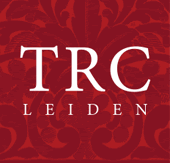Various examples of 'real' appliqué as well as inlay appliqué (inlay patchwork) survive from the medieval era in Egypt, namely from the Fatimid (969-1171) and Mamluk (1250-1517) periods. Surviving examples of medieval appliqué include banners that are made of linen with appliqué work and needle weaving. These often have designs of circles enclosing diamond shapes applied to the background cloth and small z-shapes and central diamonds. Other popular medieval motifs include chalices and swords. These forms were often made using applied woollen cloth in various colours. Sometimes the ground material was linen, on other occasions it was made of wool.
One of the main uses of khayamiyya panels was for making large, decorative tents that were used at weddings, feasts, as well as by people going on hajj. There are various medieval descriptions of decorative tents and tent panels, which refer to appliqué as well as embroidered forms. In particular, there are references to manufacturers of decorative tents by the Egyptian writer al-Maqrizi, who was born in Cairo in AD 1365. The following description comes from Maqrizi’s so-called Book of Treasures, and it gives a description of ‘The Store of Tentmakers’ in Cairo. Maqrizi was using an earlier unnamed source for part of his study, which suggests that the production of tents and tent panels had been carried out for some time (Maqrizi, Khitat, I, 418ff; quoted by Serjeant 1972:159-160):
……Among the articles brought forth from the treasuries of al-Kasr, was a countless number of packages containing tents (khaima), large tents (midrib), tents with two poles (faza), flat-roofed tents (musattah), military tents (djarkawat), fortress tents, and castle tents, tents with one side only, pavilions and marquees (fustat) manufactured of Dabiki and velvet stuffs, Khusrawani stuffs, royal brocade (dibadj), Armenian stuff, cloth from Bahnasa and Karduwan (in Persia), and the best kind of Halabi (stuff manufactured at Aleppo [Syria]), … of various colors and kinds, as well as of sundus brocade and tamim (gold brocaded stuff) embroidered with designs of elephants, wild beasts, horses, peacocks, birds and other kinds of wild animals, and human beings ….. of all manner of striking and wonderful forms and shapes.

